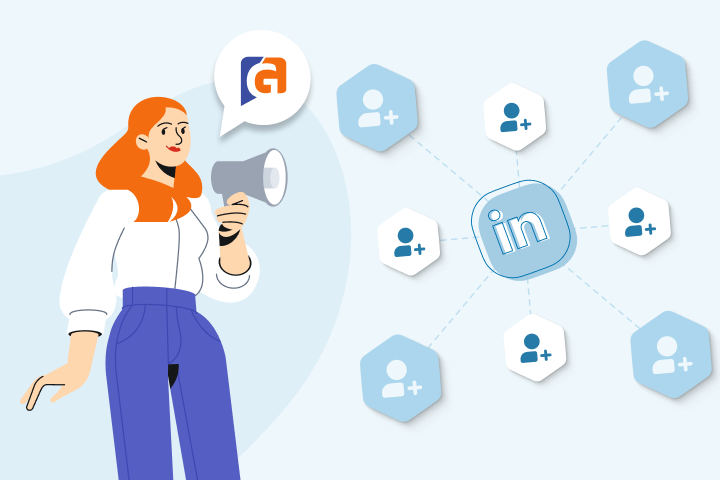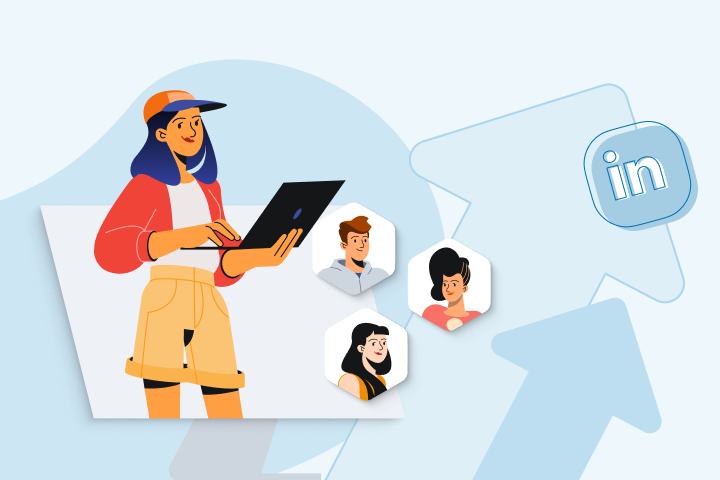Marketing Communication Strategies That Actually Work
Because your Marketing emails shouldn’t feel like a breakup text!
Picture this scenario: your team has spent months working on a new product that you’re sure customers will love. You’ve done your customer research, created many prototypes, and are finally ready to launch your new product into markets. But what about marketing your amazing new product?
You’ll need a solid strategy that helps identify your target customers and quickly explains your product to them. Your messaging must be descriptive yet concise to set you apart from the other brands in your industry. Tactics like targeted social media marketing are only as effective as the clarity and consistency behind them.
That’s why developing a well-crafted marketing communication strategy is essential. It serves as the foundation for how your brand speaks, where it shows up, and how consistently it resonates with your target audience across every channel — from landing pages to social feeds. This foundation also shapes your social media engagement strategy, helping ensure that your content not only reaches audiences but also encourages interaction, conversation, and sharing.
Feeling overwhelmed about creating a marketing communication plan? There’s no need for that! Our ultimate guide to marketing communication will give you all the information you need to create an effective marketing communication strategy for your business.
Let’s get started!
What Is a Marketing Communication Strategy?
A marketing communication strategy consists of four main elements:
- The Message: What the message should say.
- The Medium: Where to say the message.
- The Timing: When to say the message.
- The Audience: Who the message is for.
Suppose you own a store that sells mattresses. Your digital marketing communication strategy might look like this:
- The Message: Memory foam mattresses that can be customized to your size and support requirements.
- The Medium: Facebook, Instagram, YouTube, and Twitter.
- The Timing: Weekday mornings.
- The Audience: New homeowners, families, and people with special requirements.

If you publish content that aligns with these four elements, you will increase your likelihood of engaging with your target audience, generating leads, and ultimately, boosting sales.
Your marketing communication strategy should include the full spectrum of activities that you carry out to promote your products or services. From branding and generating qualified leads on social media campaigns to sales presentations and sponsorships - a well-rounded marketing communications strategy consists of several processes that work together for a common goal.
Traditionally, these activities would be distributed between the marketing, advertising, public relations, and sales departments. However, brands are increasingly moving towards a cohesive marketing communication (MarComm) strategy to create a seamless and interdisciplinary marketing strategy. This helps businesses send out consistent messaging through all communication channels and build better brand awareness and recall.
Why Do You Need Marketing Communication Strategies?
Global integrated marketing communication strategies ensure that your brand has consistent and relevant messaging across multiple channels, aligning both internal and external communication efforts to build trust and clarity. It is a powerful tool that helps build trust, reaches a larger audience, and makes your marketing efforts more efficient.

Let's take a closer look at three advantages of a marketing communication strategy.
1. It Builds Trust
When a brand has consistent communication, it makes it easier for a consumer to trust them. A well-thought-out and long-term marketing communication strategy also helps increase brand recognition. Remember, brand recall is typically the first stage of a buyer’s journey and can give you a competitive edge in the market. Consumers trust brands that communicate with them regularly because it makes the business appear transparent, authentic, and invested in its consumers.
On the other hand, potential customers will have a disjointed brand experience if they receive dissimilar messaging across platforms. This will result in reduced confidence in the brand.
2. It Reaches a Larger Audience
Modern businesses have access to seemingly endless options when it comes to choosing their communication channels. By using a combination of platforms, you can widen the reach of your messaging and increase the probability of connecting with your key demographic.
But don’t just jump onto all the channels available and try to flood the market. Instead, identify which channels will help you generate quality leads. Different platforms cater to different groups of people, and you must identify which ones are most relevant to your target audience. For instance, if you’re investing in YouTube ads, you’d want to make sure that your potential customers are active on that platform and likely to engage with promotions on it.
3. It Optimizes Your Marketing Efforts
Integrated marketing communication strategies can help bring down costs and save time. Instead of creating content that is unique for different channels, you can get different departments to work together to produce content that works across platforms. You can create a set of guidelines and share them with various teams. This will help ensure everyone understands the business’ goals, tonality, and voice, — a foundational step in building a strong internal communication strategy that supports consistent brand representation allowing each employee to present a cohesive front to the public.
How To Create an Effective Marketing Communication Strategy?
A robust marketing communication plan can set your company up for success. But a lot of work and planning goes into building an impactful strategy. While there is no one-size-fits-all approach, most marketing communication strategies follow these six fundamental steps.
1. Define Your Target Audience
An important role of a marketing communication strategy is that it helps you identify and define your target audience so you can customize your messaging accordingly.
To do this, picture your ideal customer. Think about their age, gender, profession, level of education, area of residence, income group, and other defining characteristics. Depending on your type of business and the products or services you sell, your target audience could be narrow or broad.

For example, if you’re selling a generic product like toothpaste, you will have a wide target audience and must tweak your messaging to appeal to diverse demographics. On the other hand, if you own a footwear brand specializing in orthopedic insoles, your content plan and campaigns will have to be more niche-oriented to cater to selective groups.
2. Position Your Products
Next, you need to identify the unique selling proposition (USP) of your offerings. Your messaging must answer this simple question: what problem are you helping customers solve? Answering this question should help you determine how to position your product: is it an economical, regular, or luxury good?
Example from toothbrush manufacturer AutoBrush targeting parents of young children that hate brushing their teeth, a very relatable scenario for many parents.
Depending on the positioning you adopt, you will need to tweak your communication strategy to appeal to the right end user. By providing your potential customer with a clear understanding of your product and how it can benefit them, you can greatly influence their purchase decisions. In a B2B context, this means aligning your B2B communication strategy with longer sales cycles, multi-stakeholder influence, and trust-based decision-making — especially where employee advocacy and social selling intersect.
Your choice of positioning will also help you identify your competitors. Spend some time studying the brands with the most significant market share and try to isolate the elements that make their marketing communication strategy work.
3. Create Your Branding Elements
Branding is one of the most significant parts of your marketing communication strategy since it helps your consumers identify your products.
Your branding consists of several elements, including:
- Brand name.
- Logo or wordmark.
- Tagline or mission statement.
- Color palette.
- Typography and fonts.
It’s essential to devote enough attention to your branding since many potential customers will form their first impression of your brand through it. Let’s look at two examples of brand marketing communication strategies.
In our first example, when customers look at the integrated marketing communication strategy of Apple, they notice the sleek and monotone elements. This is consistent with Apple’s cutting-edge technology and minimalist product design.

Source: Apple
In our second example, McDonald’s red and yellow color palette, welcoming Golden Arches, and the “I’m lovin’ it!” tagline exudes a fun and upbeat vibe that appeals to the masses.

While both examples have different branding elements, they both effectively represent their brands and appeal to their target audiences.
4. Select Your Marketing Communication Mix
Your marketing communications mix is the combination of channels that you will use to engage with your target audience. The number of channels in your marketing mix will largely depend on the resources at your disposal. While large companies like Microsoft or Starbucks will have the ability to use multiple communication channels at one go, startups and small businesses may prefer to focus their limited time, money, and efforts on two to three channels that promise them the best results.
Your marketing communication mix can include several avenues such as:
- Personal selling.
- Promotional events.
- Sponsorships.
- Content marketing.
- Influencer marketing.
- Offline advertisements in magazines, newspapers, or billboards.
- Digital advertising on YouTube, Twitter, and LinkedIn.
Deciding on which channels to include in your marketing mix can be difficult. You can get around this problem by trying out different channels to determine which gives you the highest return on investment (ROI).
5. Determine the Success Metrics
Cohesive offline and digital marketing communication strategies can help you cut through all the noise and engage with your target audience in a meaningful way. However, to know if your strategy is working, you’ll need to set quantifiable goals and measure your results against them.
Some examples of success metrics are:
- Increasing website traffic by a percentage factor (e.g., 20%).
- Boosting online sales by a percentage factor (e.g., 30%).
- Getting a high Instagram engagement rate (e.g., 5%).
Internal alignment plays a critical role in your outcomes. Recent internal communication statistics report that organizations with strong internal communication practices see a 21% increase in productivity — a measurable lift that cascades into more efficient campaign execution, faster feedback loops, and improved goal attainment across marketing functions.
6. Execute Your Strategy
Once you’ve gone through all five steps discussed above, all that is left is to put your plans into action and watch your numbers grow! Set a deadline to get your marketing communication strategy up and running.

Upgrade Your Marketing Communications Strategy With GaggleAMP
A global integrated marketing communication strategy can help you identify your target audience, inform them about your products and services, and educate them about your brand’s vision and values. It involves using various channels to get your message out to the right people.
Given the rising influence of digital marketing communication, few brands can afford to stay off social media— especially when a clear social media messaging strategy is key to building trust and resonance at scale. An estimated 4.6 billion used social media in 2022, making it one of the most effective platforms to engage with potential customers.
If you’re struggling to get your messaging out, consider signing up with GaggleAMP. Our employee advocacy platform is an easy way for your team to share content on social media, helping you reach out to a broader audience and drive engagement. It also empowers your sales team by turning employees into social sellers and making them more likely to meet their quotas.
Want to find out more? Book a call and start your risk-free GaggleAMP trial with a product specialist today.









